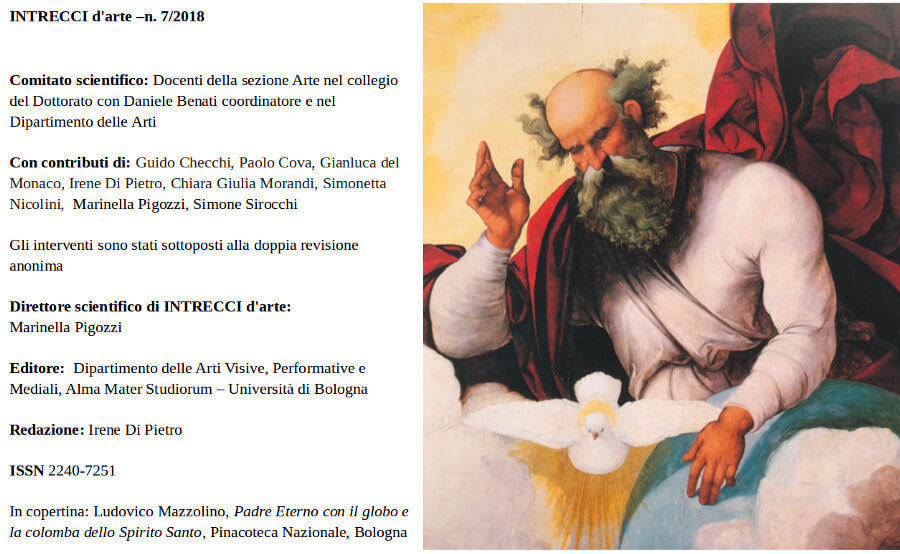Tommaso Loraghi «tagliapietre», the last altar
DOI:
https://doi.org/10.6092/issn.2240-7251/8646Keywords:
Altar, Tommaso Loraghi, sculptor, stonemason, church of San Biagio, ModenaAbstract
The altar of the Blessed Virgin of Carmine in the church of San Biagio in Modena, the most precious for the polychrome marbles which it is made of, is here attributed to Tommaso Loraghi (1608-1670), famous sculptor and stonemason engaged in the most important construction sites of the duchy of Este. The contribution offers the unpublished agreement between the sculptor, the friars and Flaminio Cantuti, holder of the chapel, and a stylistic analysis of the work, the last before the sculptor’s death, by placing the altar in the context of his production and in the program of decorative renovation of the church promoted in the Mid-Seventeenth Century. New documents help to clarify the various steps of the completion of this prestigious commission, completed by his brother Antonio Loraghi (1626-1685), superintendent of the ducal factories, and to define the improvements and new furnishings of the Eighteenth Century.Downloads
Published
How to Cite
Issue
Section
License
Copyright (c) 2018 Simone Sirocchi
The copyrights of all the texts on this journal belong to the respective authors without restrictions.
This journal is licensed under a Creative Commons Attribution 4.0 International License (full legal code).
See also our Open Access Policy.
Images and photographs may have different terms of license.
In making material available online the Journal acts in good faith. Parties who have questions or who wish to contest the use of specific works may contact the Editor in chief.
Metadata
All the metadata of the published material is released in the public domain and may be used by anyone free of charge. This includes references.
Metadata — including references — may be re-used in any medium without prior permission for both not-for-profit and for-profit purposes. We kindly ask users to provide a link to the original metadata record.






